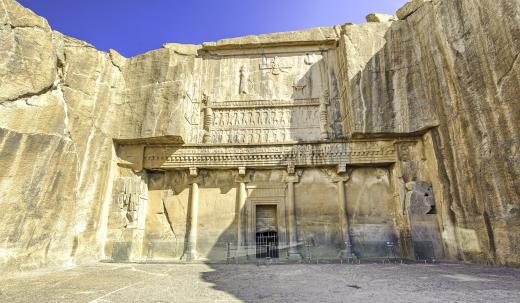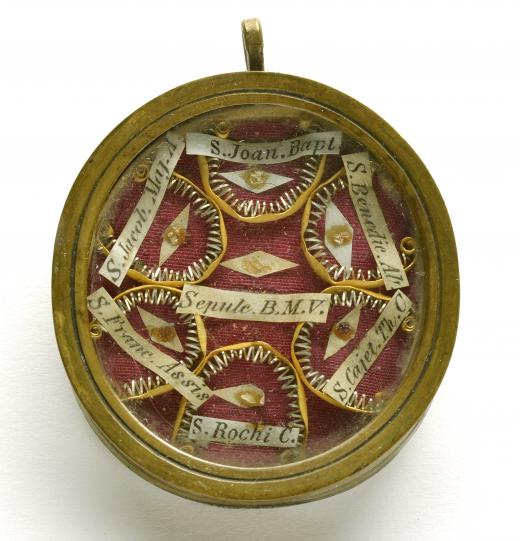What Is Social Archaeology?
Social archaeology is a discipline of archaeological study that focuses on the bigger picture, rather than the individual object or person, by attempting to put each of those things into context. In other words, it attempts to build a model of what a society may have been like by determining the roles of the individual artifacts found. Once that is accomplished, it is easier to see why a certain item may have been manufactured or used. While the discipline does have a number of advantages, researchers must also be careful not to let individual or cultural biases influence their interpretations.
Colin Renfrew founded social archaeology in the 1970s, and expanded the concept in the early 1990s. He is a British archaeologist who spent a great deal of his academic career at the University of Cambridge. He published a major work on the importance of social archaeology, but has also made many other contributions to the field, including being focused on preventing looting at major historical sites around the globe.

The benefits to social archaeology are numerous. It can help distinguish and identify cultures and people who may have been found in the same area. It can provide a context for when those people may have lived, and how they may have lived and interacted at that particular time. This type of archaeology may even identify the time period of the society without the benefit of radiocarbon dating.

Social archaeology goes far beyond simply identifying artifacts found at different sites. It explores human culture, and seeks to make the archaeological record into a historical narrative that tells humans a little something about the relationships, classes, and governments that may have preceded them at a given location. The more objects or artifacts found together, the easier it may be to determine what type of society had lived there.
In order to tell that history, social archaeology seeks to combine the artifacts and other evidence at a site with what is already known about history at that location. Ultimately, some interpretation must take place because a direct observation of what a culture or person used an object for is not possible. Therefore, this type of archaeology may introduce a modern bias in some cases, as it attempts to explain a society through a modern perspective. Archaeologists must guard against such bias, but it may be impossible to eliminate completely. Likewise, some hypotheses may be impossible to ever conclusively prove.
AS FEATURED ON:
AS FEATURED ON:












Discussion Comments
Colin Renfrew is also famous for his "Anatolian hypothesis." He believed that Indo-Europeans originally lived in Anatolia and later spread to Europe. This basically replaced the Kurgan theory that was formulated before. Renfrew is really a great archeologist who could see beyond the traditional scope of the study.
@bluedolphin-- Of course it happens. A previous commenter gave a great example and I can give you another one. I read about this in the paper the other day. Apparently, some stone structures found in Britain and other countries were believed to be bath houses for the Vikings. But some archaeologists recently opposed this theory and said that they were more likely used for brewing beer and not bathing. The parts of these structures and their proximity to drinking halls have supported their theory.
Of course, even this theory isn't 100% certain. But it might be a more valid theory than the previous. This sort of mistake happens all the time. But I don't think we should blame archaeologists for it. It can be very difficult to theorize about something we know nothing about. It's not like we can go back into time and check. I think archaeologists do their best to come to accurate and logic conclusions based on their findings.
Has there been a time when archaeological findings were interpreted in a certain way and this was later discovered to be wrong?
I'm sure that some misunderstandings occur when interpreting archaeological findings. But the trouble is that they may never be connected unless new evidence is found to prove otherwise. The consequence is that we may completely misunderstand the tradition and customs of peoples before.
@bythewell - Always take this research with a grain of salt. They could be taking huge assumptions. They recently discovered that the remains of ancient mammoth hunters that had been assumed to be male since they were discovered decades ago, were actually female. No one even bothered to test (or possibly even just look at the bones properly, since you can tell male and female skeletons apart by sight), they just assumed because they were hunters, that they were male. How could they possibly have a good conception of the social structure of those people if they made such a fundamental oversight?
@umbra21 - There has been some amazing advances in the ability to determine specific facts about ancient cultures, but I do think that sometimes the speculation goes too far. For example, every single time I see an article about cave paintings or some other kind of art, there will be a line somewhere about how archaeologists believe that it was done with religious significance or that only high ranking people were allowed to make art, or whatever. There never seems to be reasons behind this speculation though. Is it so inconceivable that cave-people sometimes got bored and started sketching idly on the walls, or that maybe they just wanted something pretty to look at? Unless there is hard evidence against this, I'm not sure why that never seems to be a possible cause, because I'm sure 90% of what could be called art in modern times is basically just idle doodling.
I read a book recently that attempted to use social archaeology (and other sources) to compare our modern social media with what ancient people would use to stay in touch with each other. My favorite was when the author compared Ancient Roman graffiti with writing on Facebook today.
It's kind of weird that they even had graffiti, because it seems like such a modern thing, but apparently they would write stuff on literal walls all the time, and it was often the same kind of stuff that people write today, such as about sexual conquests or making fun of politicians and so forth.
I guess that's the only way that you could possibly do anything with social archaeology though, is by assuming that in some respects all humans are alike, whether they live now or a thousand years ago.
Post your comments